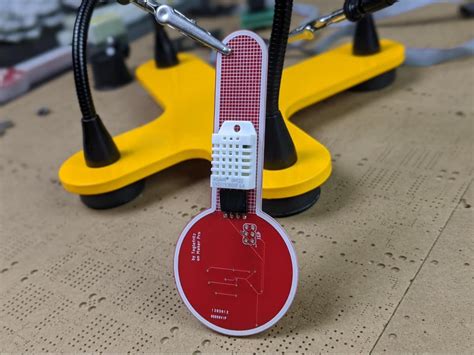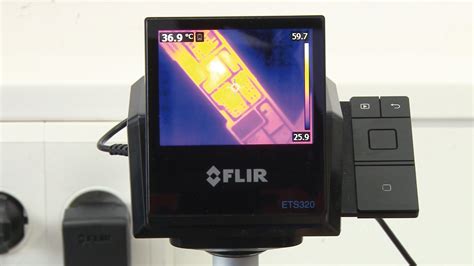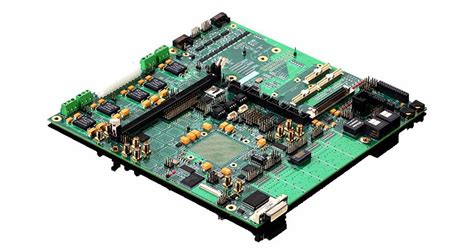The Ultimate Guide to Custom Made PCBs: Design Your Dream Board!
Key Takeaways
When embarking on the journey of creating your own custom made PCB, understanding the nuances of pcb manufacturing is crucial. Knowing how to navigate the various pcb manufacturing companies can make a significant difference in the overall success of your project. One key factor to consider is the pcb manufacturing cost, which can vary widely based on materials, complexity, and speed of production. Assessing these elements will help you budget effectively and select a manufacturer that aligns with your financial considerations. Furthermore, if you’re looking to establish a pcb manufacturing business, familiarizing yourself with industry standards and emerging trends becomes essential in differentiating your offerings. Staying informed about advancements in technology and techniques will enhance your ability to produce high-quality designs that cater specifically to your customer’s needs. By keeping these points in mind, you’re well on your way to mastering the art of custom PCB design and production.
Introduction to Custom Made PCBs
Embarking on a journey to create your own custom made PCB can be an incredibly exciting endeavor. Whether you are designing a circuit board for personal projects or for a larger manufacturing purpose, understanding the fundamental aspects of PCB manufacturing is critical. This process often begins with a clear vision of what you want to achieve, followed by a careful review of your specific requirements and intended functionalities.
As you delve into the world of PCB manufacturing, it is crucial to familiarize yourself with various PCB manufacturing companies that can bring your designs to life. You may want to explore factors such as their reputation, customer reviews, and reliability in the industry. Keep in mind that the pcb manufacturing cost can vary significantly depending on complexity, materials used, and quantities ordered. Thus, it is advisable to budget accordingly and seek quotes from multiple sources.
“The key to successful PCB design is thorough planning and understanding the constraints of the manufacturing process.”
You will also encounter various techniques and tools that can facilitate efficient designs—these are essential in taming common challenges that arise during production. Armed with knowledge about your options for fabrication services and understanding how different choices impact your project’s outcome will empower you as both a designer and a consumer in the pcb manufacturing business.
In conclusion, as you approach the design of your dream board, consider all facets—from choosing materials that suit your project needs to pinpointing effective strategies for achieving optimal layouts. Each step is vital in ensuring that your custom board meets both aesthetic and functional expectations while minimizing any potential pitfalls along the way.
For more insights on PCB design and production, consider visiting Andwin for resources tailored to guide you through the entire process effectively.
Understanding the PCB Design Process
When embarking on the journey of designing custom made PCBs, it’s crucial to grasp the steps involved in the PCB design process. This process typically starts with concept development, where you define the requirements of your circuit. Understanding your project’s specifications will help you create a schematic that will guide the layout of your circuit board.
Next, the creation of a schematic diagram is vital. This involves selecting appropriate components and arranging them accurately in your design software. At this stage, being aware of various PCB manufacturing companies and their capabilities can significantly inform your choices regarding component selection and placement, leading to reduced overall manufacturing costs.
Once the schematic is approved, you will convert it into a physical layout using specialized tools. Layout considerations include trace width, spacing, and layer stacking—all crucial elements that impact both electrical performance and PCB manufacturing cost. It’s beneficial to keep in mind that some designs can be more complex than others, affecting both production time and manufacturing business operations.
After drafting your layout, it is essential to run design rule checks (DRCs) to ensure everything adheres to standard practices for fabrication. This step helps in identifying any potential issues that could arise during pcb manufacturing, ultimately saving you time and resources in later stages.
The entire process culminates in an output file that communicates your design to manufacturers. You should select a company that aligns with your needs based on their expertise and pricing strategy. Tools like comparison tables can help analyze different pcb manufacturing companies, focusing on aspects such as quality assurance protocols, turnaround times, and customer feedback.
In summary, understanding each phase of the PCB design process equips you with valuable insights for creating efficient board designs tailored precisely to your project requirements while keeping production costs manageable.
Essential Materials for Custom PCBs
When embarking on your journey to create custom made PCBs, one of the first steps is selecting the right materials. The choice of materials can significantly affect both the performance and cost of your project. Firstly, you’ll need a substrate material, which serves as the foundation for the PCB. FR-4, a type of fiberglass laminate, is the most commonly used substrate due to its excellent strength and thermal properties. However, if you’re designing high-frequency boards, you might want to consider materials like RO4003 or Teflon, which can better sustain signal integrity.
Next, pay attention to the conductive layers; copper is typically employed due to its superior conductivity and reliability in PCB manufacturing processes. The thickness of this copper layer, often measured in ounces per square foot, can impact the current-carrying capacity of your board. For specific applications requiring higher durability or unique electromagnetic properties, you might explore specialty alloys.
Beyond these primary components, don’t overlook the importance of solder mask and silkscreen inks—these affect both functionality and aesthetics. A well-chosen solder mask can enhance durability and reliability during production while contributing to a cleaner look for your custom PCB.
When evaluating PCB manufacturing companies, it’s crucial to assess their capability to work with various materials that fit your project requirements while keeping an eye on PCB manufacturing costs. Additionally, understanding how these materials influence the overall performance will help you navigate challenges in your design process effectively. With a solid grasp of essential materials under your belt, you’re well on your way towards successfully bringing your custom PCB vision to life while considering aspects related to cost, manufacturing, and overall project feasibility.
Techniques for Effective PCB Layout
When it comes to custom made PCBs, the layout design plays a crucial role in ensuring optimal performance and functionality. Utilizing efficient PCB manufacturing techniques can greatly enhance the reliability of your board. Start by ensuring a clear understanding of the placement of components; strategic positioning can minimize interference and signal degradation. For instance, grouping related components can help in reducing stray inductance and capacitance, which are often the culprits behind performance issues.
Next, pay attention to trace width and spacing. Using the correct trace width not only affects the electrical resistance but is also essential for managing heat dissipation during operation. This becomes particularly important when working with PCB manufacturing companies, as they often have specific requirements based on their fabrication processes.
One effective technique involves implementing ground planes within your layout. Ground planes serve as a reference point for signals and can significantly reduce noise in your circuitry. Additionally, using vias wisely can help maintain signal integrity while keeping your layout neat and organized.
Remember that every decision you make impacts the overall PCB manufacturing cost. It’s wise to strike a balance between innovative design and practical budget constraints. An overly complex layout may lead to higher production costs, which is vital to consider if you’re venturing into the PCB manufacturing business for profit or personal projects.
Lastly, always take advantage of simulation tools available in today’s software solutions. The right tools will allow you to visualize potential issues before they become actual problems during production, saving both time and resources in your custom PCB journey. Adopting these techniques will greatly aid in achieving a successful PCB design that meets your specific needs while keeping costs manageable.
Common Challenges and Solutions in PCB Design
When embarking on your journey to create a custom made PCB, you will likely encounter a variety of challenges. Understanding these potential hurdles can significantly improve your design process and lead you to more effective solutions. One common issue is the complexity of the PCB layout itself. As you attempt to maximize functionality while minimizing size, it is easy to overlook the importance of component placement. You can overcome this challenge by utilizing design software tools that provide visual aids, allowing you to analyze and optimize your layout before proceeding further.
Another significant consideration in your PCB development is pcb manufacturing costs. It’s crucial to balance quality with affordability when selecting pcb manufacturing companies. To mitigate unexpected expenses, it’s advisable to gather multiple quotes and compare the specifications offered by different manufacturers. You might discover that certain companies provide a more comprehensive package that includes prototyping and testing services which can be immensely beneficial.
Additionally, keeping an eye on the potential issues related to signal integrity is vital. Termination, impedance matching, and electromagnetic interference can complicate your design further. Strategies such as appropriate routing techniques or including ground planes can substantially enhance performance while addressing these concerns.
Lastly, always be open to feedback; collaborating with other engineers or joining forums related to pcb manufacturing business practices allows you insights from professionals who have navigated similar challenges. This collective knowledge will empower you as you refine your approach to designing custom PCBs tailored precisely to your needs. The more informed decisions you make throughout the process, the more successful your final product will be when reaching out for professional assembly and manufacturing assistance.
Prototyping and Testing Your Custom PCB
Once you have finalized your custom made PCB design, the next critical step is prototyping and testing. This process is vital to ensure that your printed circuit board operates as intended before moving into full-scale production. Prototyping involves creating a prototype PCB which allows you to experiment with the circuit’s layout and functionality. You can achieve this through various methods, such as using software simulations or creating physical prototypes using rapid prototyping techniques.
During this phase, it is essential to run a series of tests on your prototype to evaluate its performance. Check for electrical connectivity and signal integrity to identify any potential issues that may arise due to design flaws or manufacturing defects. This is where understanding pcb manufacturing cost can be beneficial; testing can highlight areas that may need adjustment before committing to larger quantities, thereby saving resources in the long run.
Selecting the right approach for testing depends on the complexity of your design. For instance, simpler circuits might only require basic functional testing, while more complex layouts could necessitate more advanced techniques such as thermal imaging or automated testing equipment. Collaborating with reputable pcb manufacturing companies can facilitate access to these advanced testing tools and justify their reliability in producing prototypes.
Moreover, understanding your selected pcb manufacturing business‘s capabilities will play a crucial role in your prototype’s success. They should offer flexibility in prototyping options so you can swiftly iterate on designs based on test results. Ultimately, an efficient prototyping and testing phase not only enhances the quality of your final product but also streamlines the transition into mass production, making it an indispensable part of the custom PCB development process.
Choosing the Right Manufacturer for Your PCB
Selecting the right manufacturer for your custom made PCB is crucial in ensuring that your project meets both quality standards and budgetary constraints. When researching pcb manufacturing companies, consider their experience in the industry, as a seasoned manufacturer will likely have a strong understanding of various design requirements and complexities. Moreover, you should inquire about their pcb manufacturing cost, as this can vary significantly depending on factors like materials, volume, and complexity of your design.
It’s also essential to evaluate the manufacturer’s production capabilities. A reliable pcb manufacturing business should offer diverse services, from prototyping to mass production, while maintaining consistent quality across all processes. Don’t hesitate to ask for samples or client references to gauge their performance and reliability. Finally, ensure that they are willing to collaborate closely with you during the design process; this collaboration can lead to innovative solutions and ultimately contribute to a more successful project outcome. By thoroughly assessing these elements, you can confidently choose a manufacturer that aligns perfectly with your specific needs and vision for your dream board.
Future Trends in Custom PCB Development
As you delve into the evolving landscape of custom made PCBs, it becomes crucial to stay abreast of the future trends shaping this industry. One significant advancement lies in the rise of flexible PCBs, which are becoming increasingly popular due to their ability to fit into compact spaces and enhance device functionality. Additionally, the integration of IoT technology in PCB design is driving innovation, allowing for smarter devices capable of real-time data processing. This is compelling many PCB manufacturing companies to explore new materials and production methods, effectively lowering PCB manufacturing costs while enhancing performance.
Moreover, advancements in automation and 3D printing will revolutionize how you approach your projects. These technologies promise expedited prototyping and a more streamlined design process, allowing for rapid iterations without compromising quality. The business landscape is shifting toward sustainability as well; more manufacturers are prioritizing eco-friendly materials and processes, which can positively impact your project’s environmental footprint.
Lastly, as the demand for increasingly complex designs rises, PCB manufacturing businesses are investing heavily in R&D to optimize their services. This trend suggests a future where customized solutions will become more accessible and affordable to hobbyists and professionals alike. By keeping an eye on these trends, you can better position your projects at the forefront of technology and innovation in the realm of custom PCB development.
Conclusion
In summary, embarking on a journey to create your own custom made PCB can be both exciting and rewarding. Understanding the pcb manufacturing landscape is crucial, especially when navigating the many options available from various pcb manufacturing companies. As you explore your designs, keep in mind that the pcb manufacturing cost can fluctuate based on the materials and complexity of your board. Evaluating different pcb manufacturing business models will enable you to select the best fit for your project needs. Ensuring a clear vision during this process will ultimately lead you to achieve a board tailored perfectly to your requirements, allowing you to turn innovative ideas into reality with confidence.
FAQs
What is PCB manufacturing?
PCB manufacturing refers to the process of designing and producing printed circuit boards (PCBs), which are essential in electronic devices. It encompasses several stages including design, etching, component assembly, and testing to ensure functionality.
How do I choose the right PCB manufacturing company?
When selecting a PCB manufacturing company, consider key factors such as their reputation, technology capabilities, customer service, and production speed. Reading reviews and comparing samples can help you make an informed decision.
What affects PCB manufacturing cost?
The pcb manufacturing cost is influenced by various factors such as the material used, board complexity, size, number of layers, and the volume of production. Custom specifications can also lead to variations in total cost.
Are there specific PCB manufacturing techniques I should be aware of?
Yes, common pcb manufacturing techniques include surface mount technology (SMT), through-hole technology, and hybrid assemblage methods. Each technique has its advantages depending on your project’s requirements.
What are some common challenges in PCB design?
Some common challenges include managing heat dissipation, signal integrity issues, and compliance with manufacturer specifications. Being aware of these can help you navigate potential pitfalls in your pcb manufacturing business.







